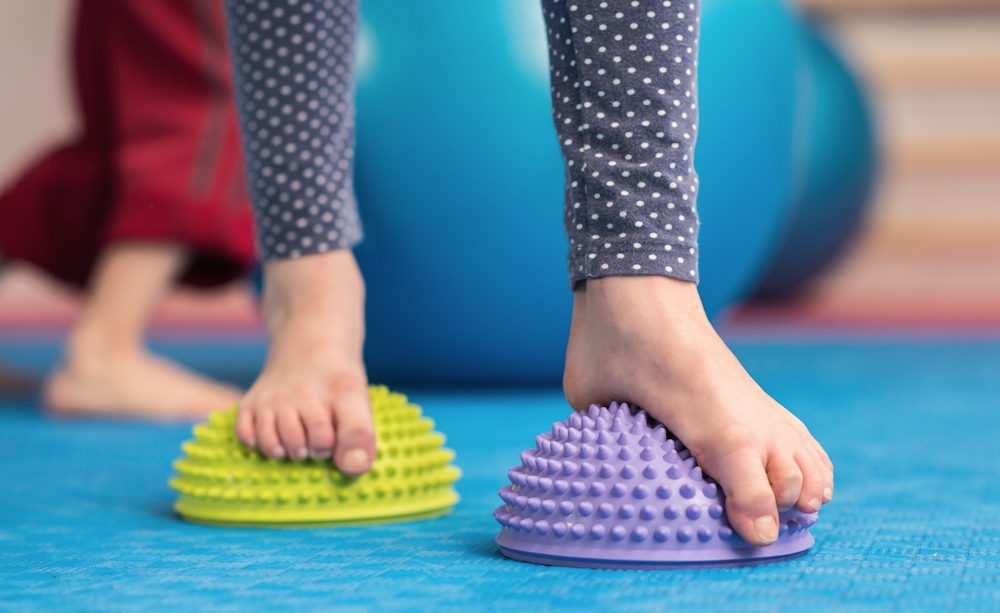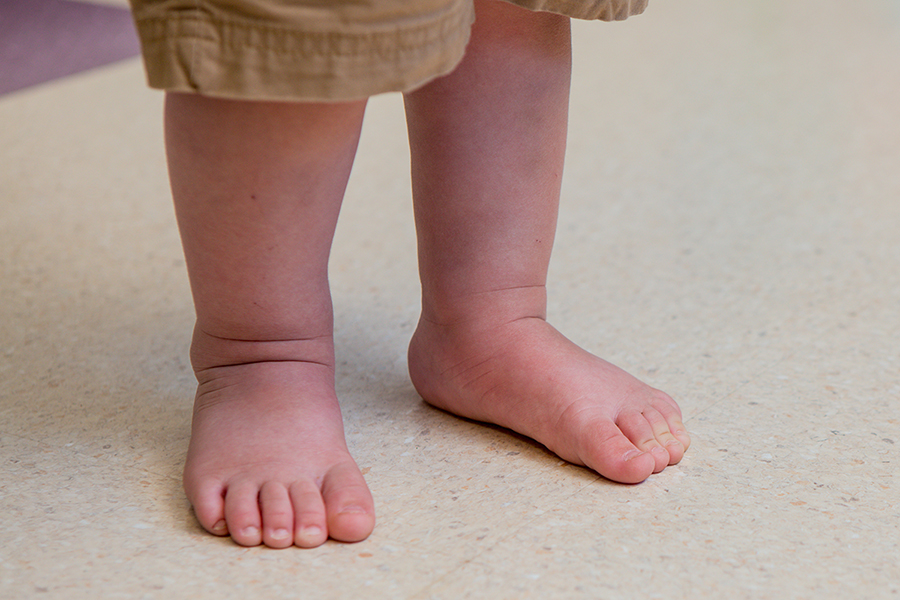The anatomy physiology and biomechanics of the babys skeleton are different when compared to. In children flat feet usually last until theyre about 6 years of age.
 What Are Flat Feet In Children And Are They Something To Worry About
What Are Flat Feet In Children And Are They Something To Worry About
You see kids bones and joints are flexible.

My 10 year old has flat feet. Flat feet or pes planus pes valgus overpronation are exactly what the name implies the feet are flatter on the bottom and allow the entire sole of the foot to touch the floor when standing. Are rarely a sign of anything serious. My daughter just turned ten and for the past year she has experienced intermittent pain due to her flat feet-right foot is worse than the left.
Children with flat feet also called pes planus have a flattening of the arch during standing and walking. Orthotic devices and shoe inserts dont do anything dramatic for this latter group but would be supportive in the treatment of painful feet. Children with flat feet often will complain that their feet hurt and you really dont know what caused it because there hasnt been an injury.
Dont usually cause any problems. They may be lazy frequently ask to be carried prefer sedentary activities or have trouble keeping up with their peers. Myriad reasons for flat feet in kids exist.
95 of children with flat feet will usually outgrow the condition by 9 years old and develop a normal arch and rarely the. You dont need to do anything if you or your child have flat feet that arent causing any problems. This is present in 90 of 1 year olds and up to 20 of adults.
Children often express their symptoms without reporting any pain. Flat foot is normal in infants and young children up to 44 of three- to six-year-olds. But for kids with flat feet most or all of their foot touches the floor.
What Are Flat Feet. Babies have a fat pad on the inner border of their feet that hides the arch and disappears over time. While most children with flat feet have no symptoms others may exhibit cramping pain or tenderness in the foot lower leg or knee.
The normal arch of the foot should develop by 8 years. Flat feet are common with kids but can also occur in adults from the deterioration of aging or after an injury. Shouldnt stop you doing any activities including sports.
For children who do not develop an arch treatment is not recommended unless the foot is stiff or painful. Normally feet have an arch. Bear in mind that a painless flat foot does not imply an asymptomatic flat foot.
She has orthotics which seemed to help initially but pain returned. Current podiatrist mentioned subtalar implant arthroeisis and calf lengthening surgery as a possibility and suggested I take her to. Broadly stating only the flat feet which are causing symptoms would require attention and the same which are flexible and painless only require observation.
Flexible flat feet are normal variants caused by increased flexibility of the joints and ligaments of the foot. AA flat foot in your 12 year old son needs to be investigated more so if it is painful. Although this seems like a foot problem it actually begin in the heel.
The greater challenge for todays practitioner is having the ability to discern when treatment is necessary for children with painless flatfoot. Looking to change orthotics not an inexpensive feat. The most common include that they just have looser ligaments muscles or joints but thats not necessarily a bad thing.
Some will develop into severely flat feet. Normally flat feet disappear by age six as the feet become less flexible and the arches develop. This foot type never develops an arch no matter what the pediatrician may tell you.
Only about 1 or 2 out of every 10 children will continue to have flat feet into adulthood. The arch of the foot usually takes up until 10 years of age to completely develop. And the more active this child becomes the more important it is to have them in the right shoes to help them develop without pain or limitations.
Limping or an aversion to athletic activities and walking because their feet and legs get tired Foot and ankle surgeons can help determine if a childs pain is related to flatfeet. Between 3 and 13 per cent of kids have flat feet and the condition is more common in younger children. In fact some degree of flat footedness that reduces with age is considered normal up until around the age of eight or nine.
If your child continues to have flat feet there may be several reasons. According to the Advanced Foot and Ankle Care Centers AFACC flat feet can simply advance over time or be passed down as a genetic trait. The foot arch develops throughout childhood for most individuals however some will never develop arches in their.
But lets look at the two core reasons so many babies appear to have flat feet when born. The foot may also turn out increasing the weight on the inner side and making it appear even more flat. Your childs calcaneus heel bone rotates inward.
Flat feet are entirely normal in babies and toddlers primarily because the arches in their feet havent fully developed. Flat feet or pes planus in toddlers means exactly what the name implies their feet are flatter on the bottom allowing the entire sole of the foot to touch the floor when standing. However it is now becoming evident that flat feet is actually a normal part of development for a majority of children aged between one to five years old.
This causes their feet to flatten when they stand hence this condition being called flexible flat foot. This causes the foot to collapse inside where the arch should. Flat feet usually fade away by the time a child is six years old but about two out of every ten kids will continue to have flat feet into adulthood.
As the name suggests flat feet also called pronation flexible flat foot and pes planus are pretty easy to spot. Flat feet are normal in babies and toddlers because the arches in their feet havent yet developed.












